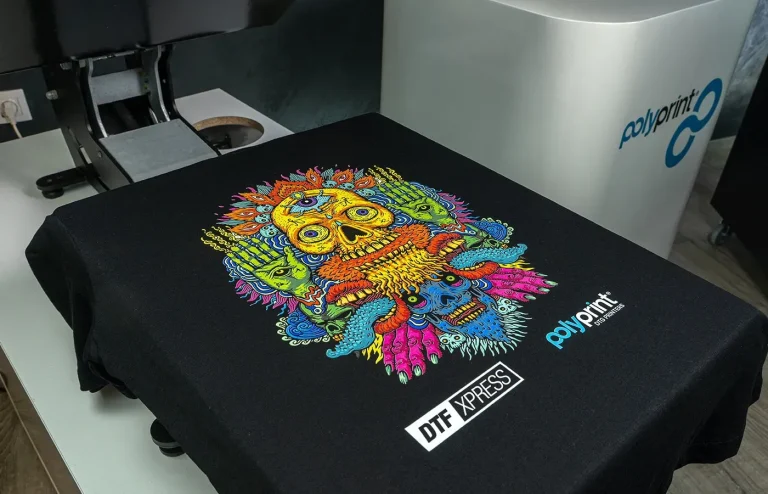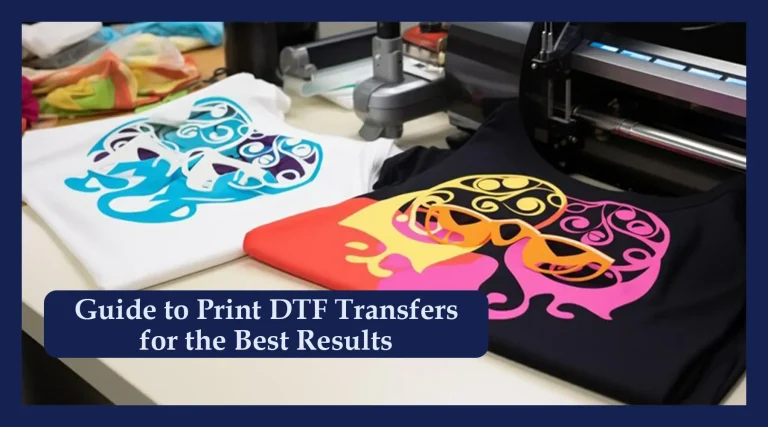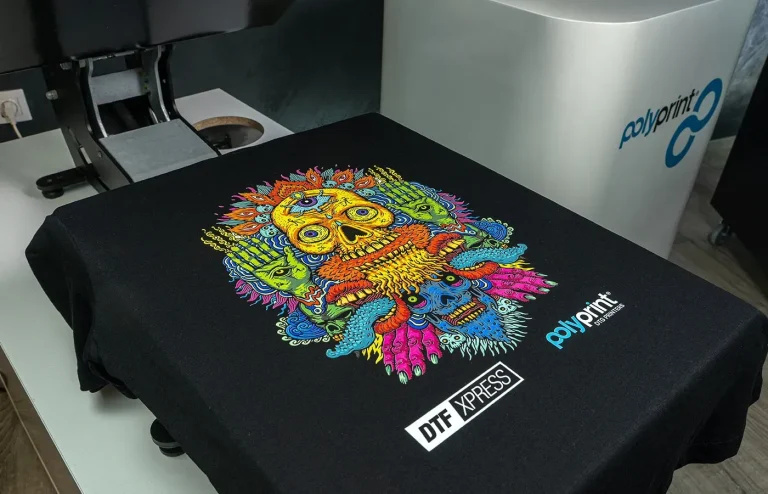Direct-to-Film Printing: A Complete Beginner’s Guide
Direct-to-Film Printing has emerged as a practical, scalable option for creators seeking vibrant designs with less complexity than traditional screen printing. A streamlined Direct-to-Film workflow can simplify the process, especially for beginners moving from concept to finished pieces with DTF transfers. With the right setup, you’ll select the appropriate film, ink, and heat source to achieve crisp edges and lasting color across a variety of fabrics. To keep results consistent, follow a repeatable transfer sequence and proper post-press care. This concise primer helps newcomers translate ideas into durable, color-rich prints ready for a wide range of garments.
In alternative terms, this film-based transfer method leverages a printable PET film to carry the design before it is heat-set onto fabric. The digital textile transfer workflow within this approach emphasizes ink choices, powder adhesion, and precise heat-press settings to ensure color fidelity and wash durability. For makers starting out, thinking of the process as a compact production line—from artwork prep to garment finishing—helps frame expectations and outcomes. As you grow, you can explore related options like film-to-fabric transfers, heat-applied graphics, and computer-driven color management to expand your offerings. By prioritizing dependable materials and repeatable steps, creators can scale from hobby projects to small-batch orders while preserving color, texture, and durability.
Direct-to-Film Printing: Mastering the DTF Workflow, Supplies, and Color Management
Direct-to-Film Printing describes a flexible process where designs are printed onto a DTF film (a special PET film) using eco-solvent or UV-curable inks, then transferred to fabric with heat and pressure. In the Direct-to-Film workflow, the ink, the film, and a hot-melt adhesive powder work together to create a ready-to-transfer sheet. For beginners, this approach is often more forgiving and cost-effective than traditional screen printing or digital textile printing, especially for small runs and color-rich designs.
To execute a reliable Direct-to-Film workflow, you need a curated set of DTF supplies: a compatible DTF printer, DTF film, adhesive powder, and inks formulated for film transfers. A complete setup also includes a heat source, such as a heat press, plus RIP software or color management tools to tune output. With proper calibration and color management, you can maintain color accuracy across fabrics—from cotton tees to blends and even some synthetics—while keeping production costs down.
Choosing and Maintaining Your DTF Equipment: Printers, Film, Powder, and Finishing
Choosing the right DTF printers is crucial for edge clarity, durability, and consistent color. Look for reliable print heads, a resolution of at least 1200×1200 dpi, and compatibility with your ink system and DTF film. The film quality matters too; select a DTF film designed for smooth release and strong adhesion, then pair it with a matching adhesive powder and inks designed for film transfers to minimize powder shedding and maximize wash-fastness.
Maintenance and workflow discipline are essential for long-term success. Regularly clean printer heads, check for clogs, and store DTF film and powder in a cool, dry place to prevent static, moisture, and quality drift. Invest in a quality heat press and calibrate temperatures and press times across different fabrics to ensure durable DTF transfers that withstand laundering. A repeatable Direct-to-Film workflow— from design through curing and finishing—helps scale from prototypes to small production runs.
Frequently Asked Questions
What is Direct-to-Film Printing and how does the Direct-to-Film workflow work for beginners?
Direct-to-Film Printing is a method where artwork is printed onto a PET film using eco-solvent or UV-curable inks, then coated with an adhesive powder to create a ready-to-transfer sheet. When heat and pressure are applied, the inks bond to the fabric, delivering vibrant colors, crisp edges, and durable prints. For beginners, the Direct-to-Film workflow is typically forgiving and cost-efficient, especially for small runs or multi-color designs. Core steps include: design with proper color management; print onto DTF film (using appropriate ICC profiles); evenly apply adhesive powder while the ink is tacky; cure the powder; pre-press the substrate; transfer with a heat press following recommended temperatures and times; and peel the film hot or cold as required. DTF transfers enable decorating a wide range of fabrics, and selecting the right DTF film and powders helps maximize color fidelity and durability.
What essential DTF supplies and equipment do I need to start with Direct-to-Film Printing on a budget?
Key DTF supplies and equipment for a budget-friendly Direct-to-Film workflow include: a DTF printer with a reliable ink system; DTF film sheets designed for your printer and ink; an adhesive powder formulated for DTF transfers; DTF inks suitable for film transfers; a heat press for finishing transfers; a curing device (conveyor dryer or oven) if you cure powder on larger runs; RIP software or color management tools to tune output; and a clean workspace. For budgeting, look for a printer with dependable print heads and at least 1200×1200 dpi, ensure ink compatibility with your film, and choose film and powder that align with your heat press temperatures. Start with a small stock of DTF film, powder, and a few fabrics to test and refine your Direct-to-Film workflow before scaling.
| Aspect | Key Points |
|---|---|
| What Direct-to-Film Printing is | Direct-to-Film Printing describes a method where designs are printed onto a PET film using eco-solvent or UV-curable inks, then transferred to fabric with heat and pressure. The printed film is coated with a hot-melt adhesive powder that binds to the ink, creating a ready-to-transfer sheet. When heat is applied, the inks bond with fibers, producing vibrant colors, crisp edges, and durable prints. For beginners, Direct-to-Film Printing can be more forgiving and cost-effective compared with traditional screen printing or digital textile printing, especially for small runs or multi-color designs. |
| Core Appeal | Versatility across fabrics; easier color management with ICC profiles; beginner-friendly and relatively low-cost setup compared with traditional screen printing or digital textile printing; supports quick turnarounds and multi-color designs. |
| DTF Supplies You’ll Need | DTF printer, DTF film, adhesive powder, inks designed for film transfers, heat source (heat press), software for design and color management, and a clean workspace. |
| A Typical Setup Includes | DTF printer with a compatible ink system; DTF film sheets designed for your printer/ink; adhesive powder formulated for DTF; curing device or heat source; heat press for finishing; substrates (cotton, polyester blends, synthetics); RIP software or color management tools. |
| Choosing Equipment on a Budget | Look for reliable print heads, good resolution (at least 1200×1200 dpi) for clean edges, and consistent color output. Film quality matters for release and adhesion; ensure a compatible ink system and reliable curing powders to influence color depth, durability, and wash-fastness. |
| Process (Step-by-Step) | 1) Design and prepare artwork; 2) Print onto DTF film; 3) Apply adhesive powder; 4) Cure/dry the powder; 5) Prepare the substrate; 6) Transfer with heat and pressure; 7) Peel and finish. |
| Tips for Best Results | Color management matters: calibrate your monitor and use ICC profiles. Test runs on chosen fabrics. Ensure powder coverage is even. Consider substrate interactions and appropriate heat/press settings. |
| Substrates, Fabrics, Finishes | Compatible with cotton, blends, and some synthetics. Light-colored substrates maximize color brightness. Texture/hand feel varies with adhesive powder and film; consider moisture-wicking fabrics and stretch-sensitive materials for press parameters. |
| Film, Inks, and Powder Choices | Choose films that release cleanly from ink; inks designed for film transfers with good gamut and stability; powder adhesive should bond well during curing and resist wash heat. |
| Quality Control, Curing, and Finishing | Regularly inspect for color shifts and edge sharpness; cure the powder thoroughly; post-cure if required by material; maintain printer heads and heat press; proper storage of film rolls. |
| Common Challenges and Solutions | White edges/halos, uneven transfer, powder shedding, color mismatch. Solutions: adjust ink density, ensure proper powder coverage, calibrate heat press, and maintain consistent environment. |
| DTF vs Other Printing Methods | Often more versatile than sublimation for multi-color designs and broad fabrics. Can be cheaper for short runs than screen printing and offers easier color management than heat transfer vinyl for complex designs. |
| Maintaining Your DTF System | Regular printer maintenance, cleaning heads, and preventing nozzle clogs. Keep heat press clean and evenly pressurized. Store film rolls in a cool, dry place to prevent moisture and static. |
| Getting Started Roadmap | Start small with a budget-friendly setup; stock a few film sheets, powders, and fabrics; practice color management; build a repeatable workflow and track settings by substrate. |
| Final Thoughts | DTF offers a practical, scalable path for beginners to decorate textiles with vibrant, durable designs across a wide range of fabrics, supported by a clear workflow and reliable supplies. |
Summary
Direct-to-Film Printing offers a practical and scalable path for beginners to explore textile decoration. This method combines a versatile film-based transfer with manageable equipment and a clear workflow, enabling small runs and multi-color artwork across a wide range of fabrics. By selecting the right DTF supplies, mastering step-by-step processes, and establishing consistent color management, creators can build a scalable production workflow that balances quality, cost, and speed. With ongoing attention to quality control, maintenance, and proper substrate selection, Direct-to-Film Printing empowers makers to turn ideas into wearable art with reliable results.





